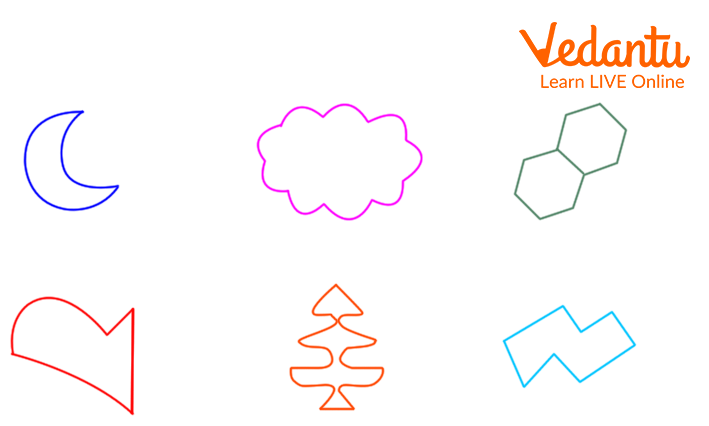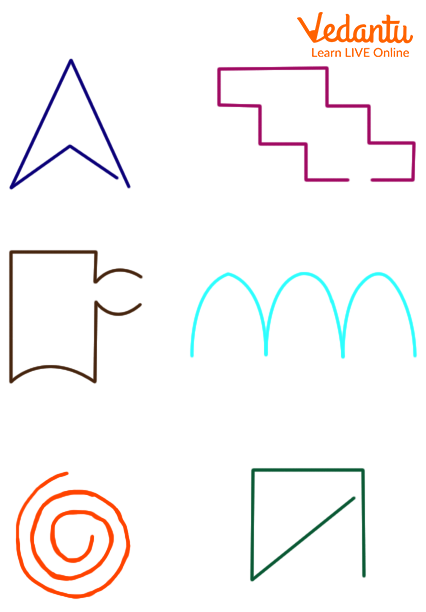




What are Shapes?
A shape can be described as an object's form, outline, outer border, or outer surface in geometry. Everything we observe in the world has a form to it.
In the items we see around us, we may discover different fundamental forms such as the two-dimensional square, rectangle, and oval, as well as the three-dimensional rectangular prism, cylinder, and sphere. Credit cards, banknotes and coins, finger rings, photo frames, dart boards, cottages, windows, magician's wands, towering structures, flower pots, toy railways, and balloons are all examples of geometric forms.
Shapes of Various Types
There are two types of shapes: open and closed.
Closed Shape Form
A closed-form is any enclosed shape that does not have any open ends and can be traced back to its origins without breaking. A triangle is a three-sided closed shape having three vertices. A circle is a closed-form with only one face, no sides, and no vertices. A quadrilateral is a four-sided closed-form having four vertices. Square, rectangle, rhombus, parallelogram, trapezium, and other quadrilaterals are examples.
Apart from the ones stated above, there are many more closed forms in geometry, called the polygons. made up of straight lines such as the heptagon, octagon, decagon, oval, and so on.
We frequently opt to portray a cloud, a signboard, and a star in a closed-form when sketching them.

Closed Figure Examples
Open Shape Form
Shapes that are open or when a form has a break in it, it is said to be open because it is not closed. An open form is made up of line segments, but one of its ends has at least one line segment that isn't attached to anything. An open shape is one in which the start point and terminus are not the same and are not joined.
Open forms aren't continuous, hence they can't be traced without breaking. An open form is made up of line segments, but one of its ends has at least one line segment that isn't attached to anything. The figure isn't closed in any way.

Open Figure Examples
Tips For Parents
Give your children playdough and matchsticks instead of worksheets to recognize or draw open shapes. Using to play with dough for curves and match sticks for line segments, will help kids create various open forms.
Play the game "show me" with your preschoolers and children instead of giving them math shape-coloring homework. You can request that they demonstrate ordinary things with the two-dimensional or three-dimensional shape you specify. You might also show them several things and ask them to identify the two-dimensional or three-dimensional shapes in each one.
You may also use playdough and matchsticks to make two-dimensional and three-dimensional shapes with your children or help make a model for them.
FAQs on Open Shapes: Definition, Examples and Figure
1. What are the benefits of learning about shapes?
Shapes may be seen all throughout the place and aren't simply for math. Shape awareness aids children in seeing and identifying patterns in a world where circular stop signs and rectangular flags are used. They also aid in the development of a variety of other skills, including visual and spatial thinking, motor skills, and so on.
2. Is it possible for a 2-D form to be open?
A 2-D form is one that is flat and has just two dimensions: length and breadth, but no height or depth. Closed forms and open shapes are two types of 2-D shapes.











